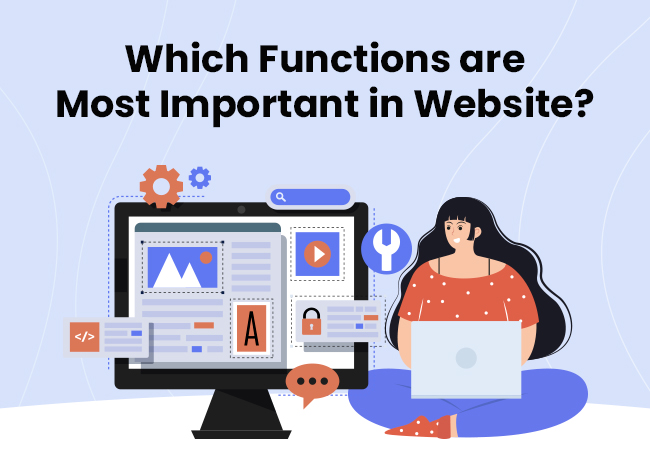According to Bankmycell, In 2023, 86.11% of the world’s population is now having a smartphone in their pocket. And on average every individual spends around 3 hours a day in front of their mobile screens. That means most of your potential customers are viewing your website on mobile phones, so a mobile-friendly website is important to provide a better user experience.
In 2016, Google made some changes in its search engine algorithm and took steps to make its index more mobile-focused. In simple language, mobile-friendly websites now will be more likely to be ranked higher on a search list than the other sites.
So now it is evident that you have to give importance to a mobile-friendly website that helps to get your website ranked higher on the search list and helps you bring more potential customers and eventually, make more profit.
READ: Website Development Checklist To Help Create Your First Website
What Does Mobile Friendly Website Mean?
In general, a mobile-friendly website means a website that is easy to load, view, and navigate on a mobile phone. But here are a few important characteristics or basic features that a website must have to be mobile-friendly:
➢ Should respond quickly
Around half of the people leave the site that takes more than 3 seconds to load. So if you want to save your customer, you must make your website speed quick.
➢ Easy to view
Users hate to scroll horizontally or zoom in on their mobile screens to view a website. So your site should be easy to view, demanding less effort from viewers.
➢ Mobile-gesture friendly
Controls are different on mobile than on desktop. So, make your site more mobile-friendly with feature buttons placed in such a manner that makes it easy for a user to tap on them.
➢ Background and Animations
Choose those background animations and images for your website which support mobile view i.e. which are easy to load and look good on the small screen.
Keeping these basic characteristics in mind, you can design a mobile-friendly website and then make the alterations from time to time as per the user review.
How to check the website is mobile-friendly or not?
Well, the best way I suppose to check whether the website is mobile-friendly or not is to use the website via a mobile phone and observe how easy to navigate it is for you. User experience is most important.
Apart from that, you can also use a few tools available online to check whether the website is mobile-friendly or not. Here is a link to one testing tool provided by Google Mobile-Friendly Test
Also Read: How To Set A Budget For Your Business Website Development
Importance of mobile-friendly websites
Though we have already discussed a few benefits of a mobile-friendly website, let’s discuss it once again in a little more depth why mobile-friendly websites are important.
1. Wider Reach
According to survey reports, most customers prefer mobile over desktop for internet searches. A mobile-friendly website helps you to reach a broader audience and thus helps you generate more leads.
Just Remember, giving a mobile-friendly experience to the users is a sign of having a professional website.
2. Improved ranking
Google’s mobile-first index clearly means that mobile-friendly websites are more likely to be ranked higher on search result pages. So if you are a beginner & want to be on top, creating a mobile-friendly website should be in your SEO strategy for new websites.
3. Low bounce rate
Mobile-friendliness helps smartphone users to feel more comfortable navigating through your website which eventually helps them to stay longer on your site and thus reduces the bounce rate.
4. Customer retention
No user would want to go back to a site where he had a poor navigation experience in past. So mobile-friendliness allows customers to keep coming to your website which eventually helps you to increase sales or generate leads.
leads. If you are building an e-commerce website, this should be your topmost priority.
Overall, mobile-friendly websites help you to develop a good image for your business and also, help you to generate more leads and a better user experience.
Also Read: 9 Popular Types Of Websites
How to Make a Website that is Mobile Friendly
Knowing the characteristics of a mobile-friendly website makes it easier for us to know how to make a website mobile-friendly. Here are 7 proven steps from our side to help you make a mobile-friendly website with ease –
1. Make your design responsive
Making your website responsive simply means that your website should be able to adapt to different screen sizes and also be easy to view on all screen sizes. Contact a website developer to help you make your website more mobile-responsive.
2. Selective Content
People these days have a very short span of attention. You would not want people to leave your website by putting tons of content in front of them on a small screen. So, select priority content and put that only on-screen. This will help you make people stay on your site for a longer period of time and engage more with your content.
Also Read: Complete Guide To The Content Management System
3. Less is more
Mobile screens are generally smaller in size and no one likes to scroll a complex website. So keep your website simple and use animations and images that look good on small screens too. Save your website from being too crowded with content, feature buttons, and all.
4. Fonts and Buttons
Make sure that the text on your website is large enough to be easily visible to viewers without any zooming effort involved from their side. Also, the buttons should be large enough that people can press them easily without tapping numerous times. Small or extra-large fonts and buttons make people annoyed and want to back out from the site.
5. CTA for mobile
If you are having a call-to-action button on your site, make sure that it’s easy to tap on a mobile screen too. Also, you can add a few CTA just for mobile versions of your websites to provide users with a better experience and make it easy for them to reach you.
6. Avoid Pop-ups
Pop-ups can be a good thing for the desktop version of your website but they can really make people annoyed on a mobile screen. As the screen is already small and a pop-up will again cover a part of it, users would want to back out from the site easily.
7. Keep Checking
From time to time, keep checking how mobile-friendly your website is through the online testing tools and make sure to check manually from mobile phones too.
As you update your website with something, run your website on different mobile phones and screens and make necessary changes according to your own user experience.
Frequently Asked Questions About Mobile-Friendly Websites
1. What are some common mistakes to avoid when designing a mobile-friendly website?
The common mistakes to avoid are Poor readability, excessive content, slow loading, non-responsive design, and complex navigation.
2. How does a mobile-friendly website improve user experience?
With a mobile-friendly website, It enhances user experience by providing simple navigation, quick loading time, and fully optimized content for seamless browsing on small devices.
3. Can I track the performance and usage of my mobile-friendly website?
Yes, you can easily track the performance and usage of your mobile-friendly website using SEO analytics tools like Google Analytics.
To know more top performance, explore best SEO tools like SEMrush & Ahrefs for deeper insights into traffic and optimization.
Conclusion
Since almost 6 out of 10 people make internet searches via mobile, it’s essential to build a website that is more mobile-friendly. Your website must be easy to view on a mobile screen with appropriate font and button sizes, appropriate quality of images used, and prioritizing selective content.
A website that takes longer to load on mobile screens or involves zooming or excessive scrolling effort from the user side generally has a very high bounce rate i.e. people are more likely to skip these sites.
So, Don’t Wait For More!
Just go, customize your website, make it more mobile-friendly, and provide your business some new heights!




